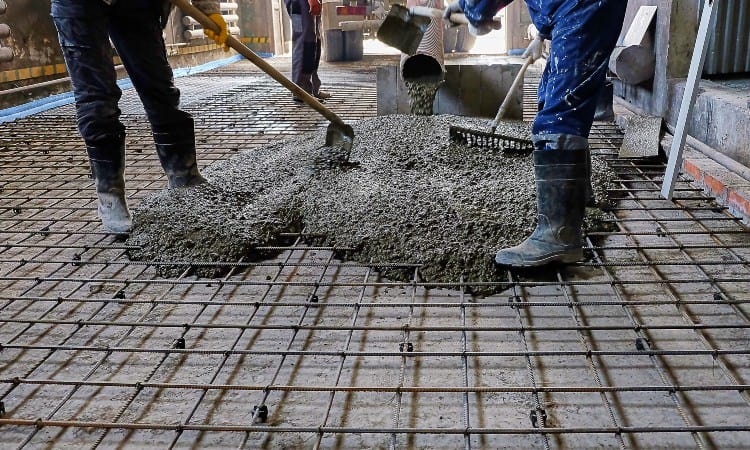Final results depend on a contractor’s ability to successfully execute and refine each grit sequence for maximum clarity of reflection and durability.
Aesthetics
Polished concrete provides a clean, contemporary aesthetic that complements nearly all interior design styles. When used in offices it sets a professional atmosphere while simultaneously motivating employees. When used in retail spaces it creates an inviting and visually attractive space which promotes customer engagement and sales. Even industrial settings can take advantage of polished concrete to turn utilitarian spaces into modern working environments that increase efficiency and morale.
Polishing concrete requires grinding the surface with increasingly finer diamond abrasives until reaching an ideal level of shine, giving designers complete flexibility when designing polished concrete floors – including variable aggregate exposure levels and reflection clarity.
Stains and dyes specifically developed for concrete can also be used to add color to a polished concrete floor, creating an antiqued or variegated appearance without altering its physical characteristics; rather, this chemical reaction won’t peel or chip and can even be completed while facilities remain operational.
Durability
People often associate polished concrete flooring with office buildings and warehouses; however, its popularity among homeowners has also steadily grown in recent years.
Polished concrete’s main advantage lies in its strength. It resists staining, etching and chemical damage as well as bearing heavy equipment or vehicles for increased weight capacity – making it suitable for warehouses or garages.
Concrete slabs Melbourne flooring has quickly become an economical alternative to carpet and tile for commercial projects such as offices, big box stores, boutique retail establishments, warehouses and even gyms.
Mechanically polishing a concrete slab involves grinding it multiple times with finer diamond tools to achieve the desired level of sheen and stone aggregate exposure. The first few steps, called “cutting,” involve using aggressive grinding tools to smooth and homogenize the concrete surface before proceeding onto more delicate diamond tools for final polishing steps.
It’s essential that a concreter understands your desired finish and follows a prescribed grit sequence to guarantee maximum durability, which is why working with a reliable concrete contractor is recommended. Furthermore, polishing is different than concrete sealers which offer topical solutions without altering structural integrity of your floor surface.
Safety
Polished concrete floors offer businesses a safer flooring option in terms of both chipping and scratching resistance, and don’t trap dirt in crevices like they would with other surfaces. According to insurance carrier CNA, dirty or contaminated floors are 17 times more likely to lead to slip-and-fall accidents than their counterparts are.
Polished concrete flooring is ideal for high traffic areas due to its durability and long lifespan. Mechanical grinding and honing processes create dense surfaces that resist wear from foot traffic and resist wear and tear over time.
Polished concrete flooring provides an attractive solution that’s free from absorbent carpet or hardwood, eliminating smells or harmful volatile organic compounds (VOCs). Honed and burnished polished concrete is also stamped with patterns or graphics for an eye-catching flooring option in retail spaces and other commercial settings. Furthermore, penetrating sealers can further accentuate its look – this option is popular among restaurants, auto showrooms, and other businesses looking to project a modern, clean image.
Maintenance
Polished concrete floors provide architects and designers with an opportunity to add contrast, texture and color as architectural statements. Dyeing the concrete prior to polishing allows designers to choose from an expanded color range; different aggregates or cement colors may also be added during construction for an individual look.
Keep your floor looking its best by using pH neutral cleaners to regularly keep it pristine with fresh floors, stain reduction, entry mats for collecting dirt and dust, as well as regular deep cleaning to minimise build-up of contaminants.
Spills should be cleaned up quickly to reduce staining, particularly acidsic or caustic spills like ketchup, pickle juice and soda pop which can etch into concrete surfaces over time and stain it with their residue. When left to sit for extended periods, these liquids may penetrate further into the substrate etching it further before being cleaned away.
Regular auto-scrubbing with pads tailored specifically to the level of sheen on your floor and dilute cleaners as recommended by pad manufacturers can extend the life of polished concrete floors, as well as save money by eliminating costly stripping and waxing costs.

